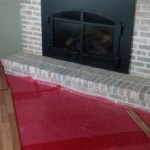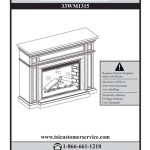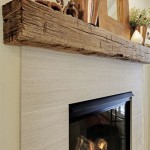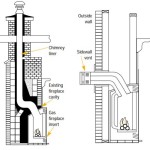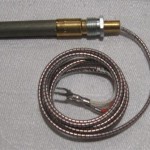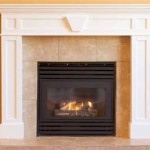How To Childproof Your Fireplace Hearth
A fireplace hearth, while aesthetically pleasing and providing comforting warmth, can pose significant safety hazards to young children. The hard, sharp edges and protruding structure can result in serious injuries from falls or accidental collisions. Childproofing a fireplace hearth is therefore a crucial step in ensuring a safe home environment for infants and toddlers. This article provides a comprehensive guide to the various methods and considerations involved in properly childproofing a fireplace hearth.
Evaluating the Risks
The first step in childproofing a fireplace hearth is a thorough assessment of the specific risks it presents. The primary concern is the hard surface of the hearth, typically made of brick, stone, or concrete. A fall onto this surface can easily result in bumps, bruises, cuts, and even more severe injuries like concussions or fractures, especially in toddlers who are still developing their balance and coordination. Sharp corners and edges are another significant hazard, as they can cause lacerations and puncture wounds. Additionally, the height of the hearth can pose a risk, as children may attempt to climb onto it and fall off. Finally, consider the material of the fireplace itself; if it's particularly rough or uneven, it may increase the chance of scrapes and abrasions. Identify all potential hazards to determine the most appropriate childproofing measures.
Another key consideration is the age and developmental stage of the child. Infants and toddlers who are just learning to crawl or walk are particularly vulnerable, as they are still developing their spatial awareness and motor skills. Older children, while generally more mobile and aware, may still be at risk if they are prone to running or playing near the fireplace. Evaluate the child's abilities and tendencies to adapt the childproofing strategy accordingly. A more extensive approach may be needed for a very active or adventurous toddler compared to a more cautious child.
The frequency of fireplace use also influences the level of childproofing required. If the fireplace is used regularly, additional precautions are necessary to prevent burns. Consider measures like installing a fire screen or gate to keep children at a safe distance from the heat. If the fireplace is rarely used, the focus can be primarily on preventing injuries from falls and collisions. It’s important to establish a plan based on likelihood of the fireplace being used and the child’s access to it.
Implementing Protective Measures
Once the potential hazards have been identified, proceed with implementing protective measures. Several options are available, each offering varying degrees of protection and aesthetic appeal. The choice will depend on individual needs, budget, and the overall design of the living space.
Hearth Guards and Bumpers:
One of the most common and effective methods is to install a hearth guard or bumper. These are typically made of soft, impact-absorbing materials like foam or rubber and are designed to cushion the hard edges and corners of the hearth. They come in various shapes and sizes to fit different hearth configurations. When selecting a hearth guard, ensure it is made of non-toxic materials and is securely attached to the hearth using strong adhesive or fasteners. Regularly check the attachment to ensure it remains secure and replace it if it becomes damaged or worn.The material itself is a crucial consideration. High-density foam or rubber offers superior impact absorption compared to thinner or less dense materials. Look for products specifically designed for fireplace hearths, as these are typically tested to meet safety standards. Also, consider the color of the hearth guard. Opt for a color that blends in with the hearth or surrounding décor to minimize its visual impact.
Installation is another important factor. Follow the manufacturer's instructions carefully and use the appropriate adhesive or fasteners. Ensure the guard is securely attached to the hearth and that there are no gaps or loose edges where a child could potentially pull it off. Periodic inspections are recommended to verify the integrity of the installation.
Hearth Gates:
For comprehensive protection, consider installing a hearth gate. These are similar to baby gates and create a physical barrier around the fireplace, preventing children from accessing the hearth altogether. Hearth gates come in various designs, including freestanding, wall-mounted, and expandable options. Choose a gate that is tall enough to prevent a child from climbing over it and has a secure locking mechanism that is difficult for a child to open.When selecting a hearth gate, consider the size and shape of the hearth. Expandable gates are a good option for irregularly shaped hearths, as they can be adjusted to fit the specific dimensions. Wall-mounted gates offer the most secure attachment, but they may require drilling into the wall or hearth. Freestanding gates are portable and easy to install, but they may not be as stable as wall-mounted options.
The material of the gate is another consideration. Metal gates offer the most durability and security, while wooden gates may be more aesthetically pleasing. Ensure that the gate meets safety standards and has a childproof locking mechanism. Regular inspections are key to ensure the gate is properly installed and functions correctly.
Padded Covers:
Another option, particularly suitable for less frequently used fireplaces, is a padded cover. These covers are designed to completely cover the hearth, providing a soft and cushioned surface. They are typically made of fabric or vinyl with a padded filling. While they may not be as aesthetically appealing as other options, they offer excellent protection against falls and collisions.When choosing a padded cover, make sure it is made of durable and easy-to-clean material. It should also be securely attached to the hearth to prevent it from being easily removed. Consider the thickness of the padding; thicker padding will offer greater protection. As with other childproofing measures, regular inspections are necessary to ensure the cover remains in good condition and provides adequate protection.
Furniture Placement:
While not a direct method of childproofing the hearth itself, strategic furniture placement can also help to minimize the risk of accidents. Position furniture in a way that creates a barrier between the child and the fireplace. For example, place a sofa or large chairs in front of the hearth to prevent the child from accessing it. This approach is most effective when combined with other childproofing measures.The effectiveness of furniture placement depends on the layout of the room and the size of the furniture. Ensure that the furniture is stable and cannot be easily moved or pushed over by a child. Also, be aware that furniture can potentially be used as a climbing aid, so ensure the child cannot reach the hearth by climbing on nearby chairs or tables.
Maintaining a Safe Environment
Childproofing the fireplace hearth is not a one-time task but an ongoing process. Regular maintenance and supervision are essential to ensure a consistently safe environment for children. This includes regularly inspecting the childproofing measures, reinforcing them as needed, and actively supervising children when they are near the fireplace.
Regular Inspections:
Schedule regular inspections of all childproofing measures, including hearth guards, gates, and padded covers. Check for any signs of damage, wear, or loosening. Ensure that all attachments are secure and that the childproofing devices are functioning correctly. Address any issues promptly to prevent potential accidents. A monthly inspection is a good starting point, increasing frequency if children are very active and often playing near it.Reinforcement and Replacement:
As children grow and develop their motor skills, they may become more adept at bypassing or overcoming childproofing measures. Be prepared to reinforce or replace childproofing devices as needed. For example, a taller or more secure hearth gate may be necessary as the child gets older and more mobile. Similarly, a more durable hearth guard may be required if the child starts to chew or pull at the existing one.Active Supervision:
Even with the most effective childproofing measures in place, active supervision remains crucial. Never leave a child unattended near the fireplace, especially when it is in use. Actively monitor the child's behavior and intervene if they attempt to climb, reach, or play near the hearth. Teach children about the dangers of the fireplace and establish clear boundaries about where they are allowed to play.Education and Awareness:
Educate all caregivers, including parents, grandparents, and babysitters, about the importance of childproofing the fireplace hearth and the specific measures that have been taken. Ensure that everyone is aware of the potential hazards and the rules for keeping children safe around the fireplace. Open communication and consistent enforcement of safety rules are essential for creating a safe environment for children. Children should be taught, at a young age, that the fireplace may be hot and must not be touched.By taking these precautions and implementing appropriate childproofing measures, it is possible to significantly reduce the risk of injuries associated with the fireplace hearth and create a safer home environment for young children. This requires ongoing vigilance and adaptation as children grow and their abilities evolve.


Diy Baby Proofing Your Brick Fireplace Thisaveragemom

Baby Safety Foam Soft Seat Edge Cushion Fireplace Hearth Guard

How To Childproof Your Fireplace Baby Proof

Baby Safety Cushion Fireplace Proof Custom Size

Pin On Fireplace Protection

Babysafetyfoam Com Baby Proofing Fireplace Hearth Guard Bumper Pad Safety Cushion Cover Protection

Pin On For The Home

Childproof Your Fireplace Hearth Salt To Taste

Childproof Your Fireplace With Swimming Pool Noodles Easy On Off Inexpensive Too Beautiful Home Designs House Styles
Related Posts

